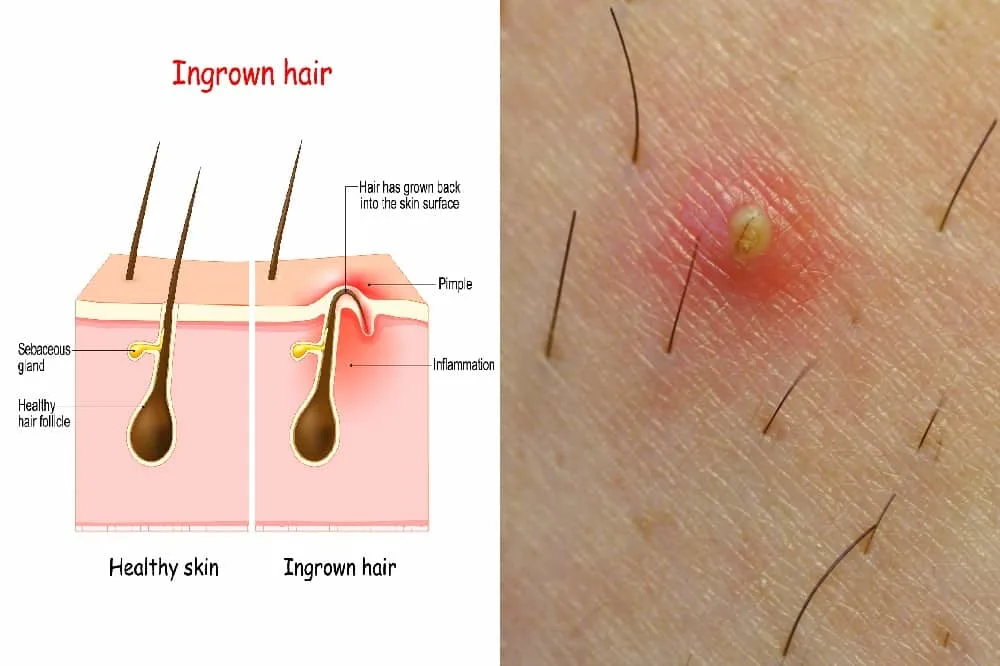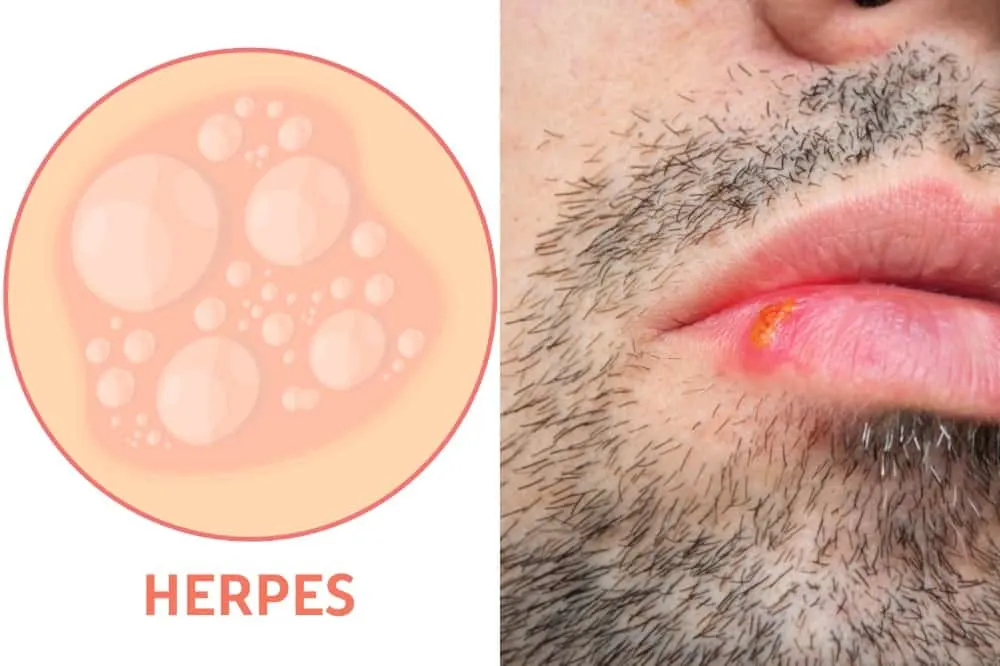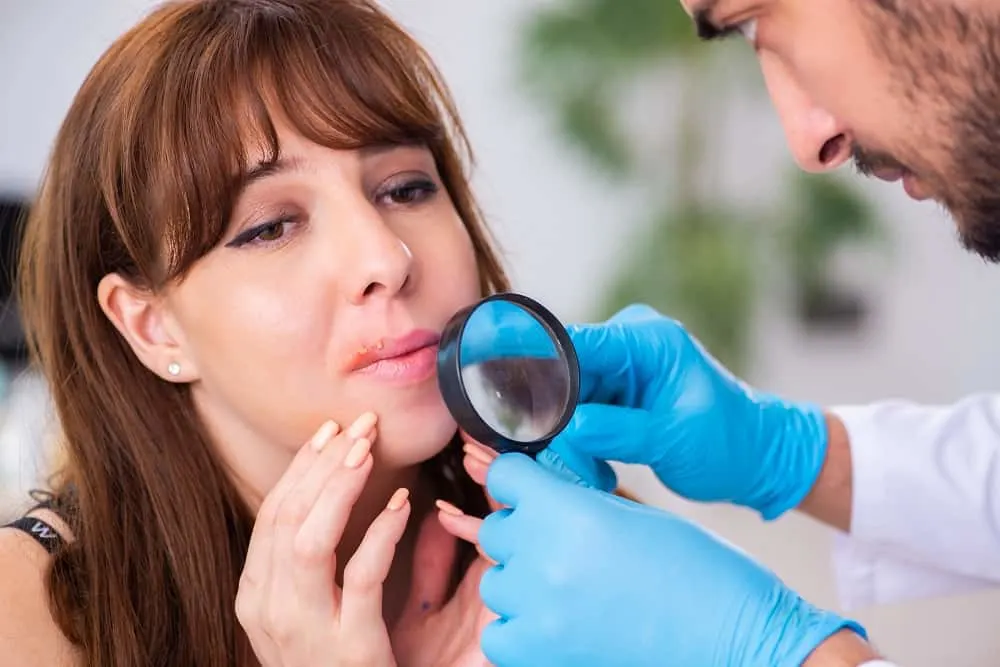Encountering unsightly or uncomfortable bumps can be disconcerting. This is especially true when they appear in particularly sensitive areas and when you’re unsure what the cause is.
Two of the most common causes of bumps in delicate areas are ingrown hairs and herpes. Both conditions can cause pain and irritation and may let off discharge if the pustules are ruptured. They’re both relatively minor conditions, but while ingrown hairs will usually resolve themselves, herpes usually requires professional treatment.
Here’s how to tell the difference between ingrown hairs and herpes by their symptoms and appearance. Read on to discover their causes, treatment, and when to see a doctor.
Ingrown Hair

Ingrown hair happens when the hair is cut too close to the skin or when your regular hygiene routine is disrupted and oil and other debris are allowed to accumulate on the skin. It can also be caused by some hair removal techniques like waxing and shaving, as well as plucking. Sometimes, though, it just happens naturally due to an odd growth pattern.
Blocking or irritating the skin like this can make it difficult for the hair to penetrate the surface of the follicle and cause it to become trapped. This can lead to minor irritation and infection, which causes the formation of small acne-like bumps. You may or may not be able to see the hair inside the pustule as a thin, dark line (depending on the hair’s color and thickness).
Though it’s possible to have multiple ingrown hairs at once, they are usually fairly isolated and minor. They’re not likely to reoccur unless the cause is repeated; they do not have a set pattern of appearance.
Ingrown hairs are unlikely to be serious and usually resolve on their own in a few days to a week. To speed up the process, you can wash the area with gentle soap and exfoliate to clean the debris and make it easier for the hair to emerge.
Herpes

There are two main kinds of herpes virus – HSV-1, which causes cold sores and fever blisters, and HSV-2, which is a sexually transmitted disease. Both are infections caused by contact with an infected individual, either through kissing, sharing drinks and food, or through sexual contact.
Both are relatively common, with roughly 20% of American adults contracting HSV-2 at some point in their lives, though many people never show symptoms at all. These people are considered carriers, and while they may never know they have the disease, they are capable of spreading it.
Both kinds of herpes generally manifest as clusters of tiny bumps along the affected area. These bumps tend to be more akin to a blister than common acne and are slightly watery with a yellow discharge if ruptured. These outbreaks are frequently accompanied by minor cold-like symptoms such as a headache or fever and can cause soreness in and around the area.
Herpes outbreaks will usually resolve themselves in a few days to a week but are very likely to reoccur without proper treatment. There are, unfortunately, no direct treatments for the bumps once they appear, but certain antivirals can help prevent lesions from coming back.
How to Tell The Difference Between Ingrown Hair and Herpes – Quick Reference Chart
Though they may look similar on the surface, ingrown hair and herpes sores have very different symptoms. Here’s a simple chart on how to tell the difference quickly and the causes and treatment options for both conditions.
|
Ingrown Hair |
Herpes |
|
|
Cause |
Improper hair removal or hygiene, or abnormal hair growth |
Infection transmitted through kissing or sexual contact |
|
Soreness |
Isolated to bump |
Bump and surrounding areas |
|
Redness or irritation |
Isolated to bump |
Bump and surrounding areas |
|
Clusters of bumps in multiple areas |
No, usually a single bump |
Yes, usually several small bumps across the affected area |
|
Discharge |
White or clear |
Yellow |
|
Other bodily symptoms |
None | Headache, fever, general body aches |
| Needs professional attention? | No |
Yes |
|
Treatment |
Gentle cleansing, will usually resolve itself in one week or less |
Antiviral medication, flare-ups will resolve relatively quickly but are likely to reoccur |
When to See a Doctor

Generally, both conditions will resolve themselves in about a week. If you cannot tell which condition you have, consider treating it like an ingrown hair. Keep up good hygiene by washing regularly and wearing loose-fitting clothes over the area, and avoid hair removal. If the bumps return or persist, then you likely have herpes and should seek medical assistance.
If you suspect you may have herpes, it’s best to consult a doctor as quickly as possible. They can prescribe you a controlling medication to suppress outbreaks and advise you on how to manage your symptoms effectively. This is especially helpful if the lesions keep coming back.
As mentioned, ingrown hairs usually resolve on their own, but if they become particularly painful or large, then it may be time to see a professional about it. If the bump ruptures and you feel worsening pain or irritation, you should see a doctor for infection treatment. It may also be a good idea to consult a professional if ingrown hair is a recurring issue for you.
If you’re unsure about which issue you’re facing, it has not resolved itself in more than two weeks, or if you notice unusual symptoms or changes to the bumps, consult your doctor right away, as there may be something more serious going on.
Conclusion
Both of these conditions can be frustrating or embarrassing to deal with. With time and proper care, though, they can be managed (or eliminated in the case of ingrown hair). Ingrown hairs and herpes are different conditions but are similar in that they are both common and easy to work with. They are nothing to be ashamed of or guilty about.
Suppose you suspect you may have either ingrown hairs or herpes. In that case, you can use the information provided here, along with medical professionals’ advice, to identify which condition it is and how best to address it. Consider making these changes to your hygiene routine to make them more manageable and less painful over time.
More Related Articles:
